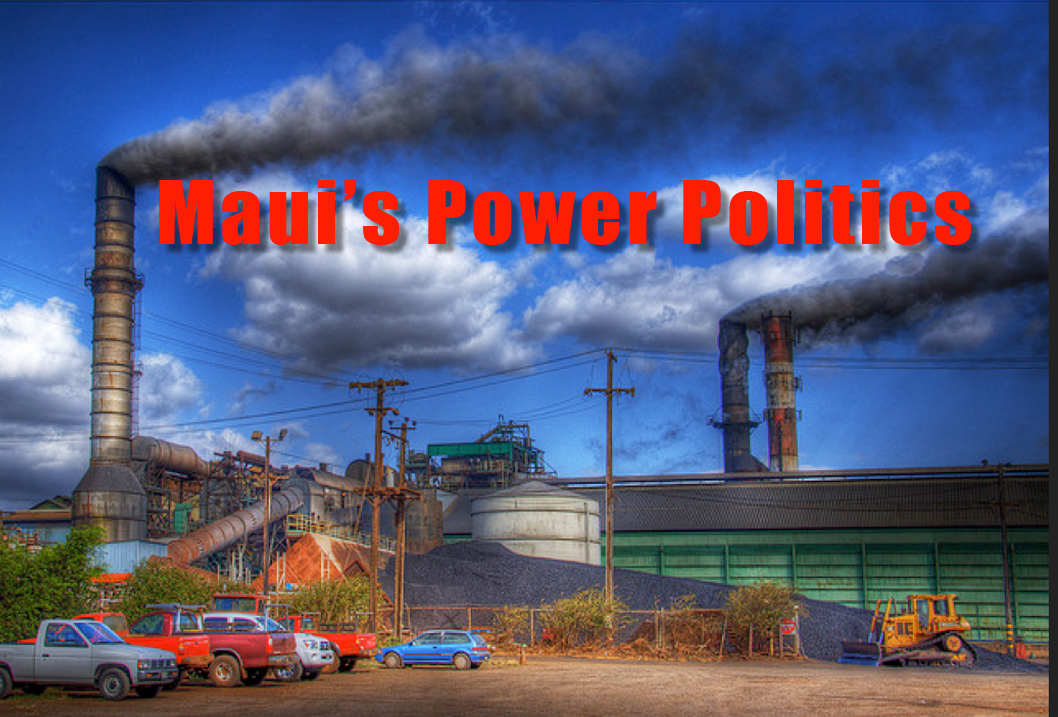
Sugar cane production on Maui is ending, nearly 350 jobs will be lost and as many more are at risk. The sad truth is that it didn’t have to happen this way.
For decades members of the Maui community have been trying to engage HC&S in a dialog to carefully construct an intelligent exit strategy to move away from sugar cane burning. HC&S steadfastly refused to seriously consider alternatives to sugar cane production and they now find their backs up against an economic wall because of, they say, rainy weather.
Cane burning may indeed stop before the end of 2016 if, as expected, Judge Cardoza grants in February a preliminary injunction resulting from a current lawsuit that shows that the regulatory process through which HC&S is granted it’s burn permits is unconstitutional.
They blame the weather. I blame their arrogance and greed.
If the company really cared for the community here, the way they claim, they would have long ago embarked down the diversification road they are now being forced, and are ill prepared, to take.
If left to their own devices HC&S will surely continue to exploit the natural resources and people of Maui with no regard to what is righteous or pono. The company is, after all, in business today as a result of the shameful and illegal practices of the colonial, plantation takeover of Hawaiian lands and indentured servitude (slavery).
For example:
The company pays next to nothing for water that EMI diverts away from streams. Water that would otherwise support indigenous farming. They do little to maintain the integrity of the water system such that much of the water that is diverted is lost to anyone’s use.
The company and regulators refuse to acknowledge years of proof that the poisonous chemicals that are regularly sprayed leave the fields and adversely effect agricultural practices and lives elsewhere on Maui.
The company and regulators also refuse to acknowledge that the air monitors they have placed to monitor cane smoke are the wrong type and poorly placed to do the job.
Predictably, signs are already showing of new forms of exploitation being devised. In anticipation of expanding the cattle industry here The Cattleman’s Association recently removed from their website their oath (written in 1996) to provide protection from the elements for cattle. President Alex Franco has reportedly already approached the Council to remove animal welfare protections on Maui so they won’t have to provide shade.
What’s next, changes to Maui’s zoning laws that would allow A&B more real estate to develop? Leases to Monsanto for more under-regulated, mixed-chemical, open-field experimentation?
Our hope is that with the power of the internet and social activism this community will be able to reveal, track and block each new ugly attempt the company makes to transfer profits off the island and avoid doing what is right for Maui.
With the end of sugar cane mono-cropping the extremely depleted soils in those fields will need remediation before other diversified crops will grow there. Erosion control will be essential. If HC&S’s narrow-minded practices persist and A&B continues to withhold infrastructure investments, the transition out of cane will surely be a disaster for Maui.
What will happen to Maui’s energy costs and air as they keep their ancient power plant going by burning more and more coal instead of sugar cane? That plant is near the end of its life and after all these years of taking profits out of Maui they have made zero investments in what comes next.
Not so long ago very little food had to be imported here. Today Maui eats 85% to 95% imported food. As well, the islands are already saturated with more agricultural chemicals than what our delicate ecosystem can tolerate. HC&S wouldn’t bother to consider it before but now they must be led into developing crops like industrial hemp, bamboo and regenerative food producing agriculture that are decidedly not dependent on chemicals.
There are many, many options that can evolve our agricultural economy in sustainable, non-chemically dependent ways that don’t require federal subsidies, so that Maui’s agricultural workers can stand proudly and not on the backs of taxpayers.
We support legislation that would allow Hawaii’s public school lunches to stop serving millions of pounds of imported apples and off-island bananas, to be replaced with tropical fruits that can be grown here.
Shame on HC&S for arrogantly refusing change, for ignoring the obvious, eventual demise of sugar on Maui and for not doing what they could sooner to protect those 675 jobs.


Mahalo Sam for the work you have done to wake up our residents and show them that a united voice can truly move things.
Thank you!
NNIIIICE, Sam! Excellent, actually…a nice meal of hearty truth!
ML&P extracted 20 million dollars from the state in exchange for Lipoa Point in order to “protect former employees from losing their pensions”. Since the state set a precedent by capriciously allowing itself to be blackmailed into preserving open space, watch A&B do the same. Unfortunately our state government is a wholly owned subsidiary of A&B, Monsanto and a handful of other companies. The chickens have come home to roost and history surely repeats itself.